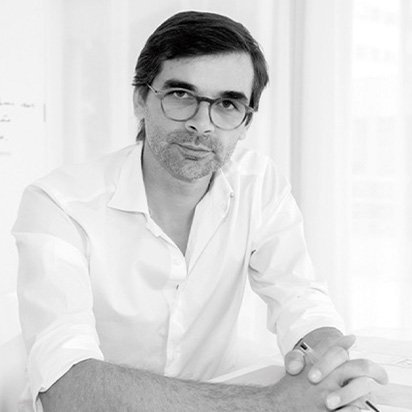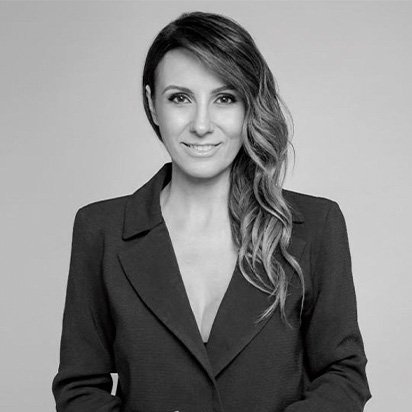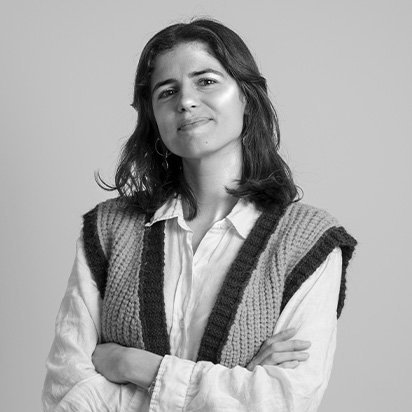
Anonymous design
José Carlos Nunes de Oliveira

From romantic to bohemian
Micaela Oliveira
Drawing by hand in an age of technology
Marta Castillo
Architect at Openbook

As architects, we are aware that drawing is our language, our way of communicating. This is why drawing is related to reasoning: we can learn it, perceive it, and in all of this there is a part that brings us a certain satisfaction and, at the same time, provokes us, just like in any other artistic endeavour.
This, our language, makes us responsible for the tonnes of weight contained in the instant the pencil comes into contact with a sheet of paper. It’s our living legacy in a gesture that, like a sharp knife, goes through the skin and lingers. From the moment the line appears, it becomes our responsibility, because only we know what happens between the line and the paper. The pencil is an extension of our hand and every time we use it, we have the chance to choose our attitude towards the page: our predisposition to be formal and more correctly semantic, or to have the authenticity of just wanting to express ourselves according to what we feel.
Drawing is nevertheless an exercise, a process in which we give form to a concept and unleash an idea that was inside us. We’re attempting to tell the world how we see or want things to be, as used to happen with cave paintings, where cave walls were a record of how the world was seen at the time.
Designing on paper forces us to draw on our experiences, to feel comfortable and confident in embracing the idea that we now own. This is why we can talk about drawing in terms of graphic thinking, because when we draw we are thinking, supported by the outlines that appear and underpin our design decisions. We can therefore speak of symbioses between the act of thinking and the act of drawing.
Of course, technology and machines have their place in this century. The technological revolution has changed the way we work. Visual references are no longer those books and magazines: we now access visual references much more quickly and, to some degree, without a sense of choice and responsibility. There is a whole world of possibilities and this implies certain changes in the processes of hierarchising and selecting formal references in designing and in the creative process.
The idea, conception and creation of a concept is a point that, as architects, we should be able to reach. The intensive use of technology persuades us to miss this opportunity to feel the project as something visceral. The time when we are masters of the pencil is a time when we are blessed with the ability to make reasonable, firm and almost physical decisions. Drawing is not just a conversation between pencil and paper, but a time of reflection and thought between us and space-time. In the case of the machine, making a click only takes an instant and, unfortunately, results in virtually zero thinking. There is a physical and mental disconnection from the idea element as the centrepiece of the creative process, and we are left in limbo, not knowing who the originator of the idea really is. Digital reality eludes us: it doesn’t belong to us, we can’t hand it a piece of drawing paper to study other possibilities. In hand-drawing there is this moment: we place successive layers on top of the architectural drawing until it forms a kind of graphic palimpsest. The machine process is different, although we can produce other hypotheses of a reality more quickly. The evolutionary process is less tangible and the erasing process is less arduous.
However, it would be a serious mistake not to appreciate the progress that technology and the machine represent within these processes. For some time now it has been clear that the appearance of 2D and 3D design software represents a clear reduction in production time. And this is where the point is revealed: within the process, the moment at which we find ourselves is related to the effectiveness of the tool we use. It’s important to know when the human hand has to be yielded to the machine, and it’s important to be able to differentiate between an early concept phase and an advanced production phase. We have to give each tool the place it deserves.
That’s why, in this age of technology, we need to have common sense to differentiate between these two processes and realise that one cannot dictate the other. Drawing by hand and by machine must coexist as a responsibility that we have to take on as architects, to embrace our legacy and ensure that our heritage endures, while remaining focussed so that, through the designs, our process doesn’t cease to be human, but also so that it becomes increasingly effective through technology.
This, our language, makes us responsible for the tonnes of weight contained in the instant the pencil comes into contact with a sheet of paper. It’s our living legacy in a gesture that, like a sharp knife, goes through the skin and lingers. From the moment the line appears, it becomes our responsibility, because only we know what happens between the line and the paper. The pencil is an extension of our hand and every time we use it, we have the chance to choose our attitude towards the page: our predisposition to be formal and more correctly semantic, or to have the authenticity of just wanting to express ourselves according to what we feel.
Drawing is nevertheless an exercise, a process in which we give form to a concept and unleash an idea that was inside us. We’re attempting to tell the world how we see or want things to be, as used to happen with cave paintings, where cave walls were a record of how the world was seen at the time.
Designing on paper forces us to draw on our experiences, to feel comfortable and confident in embracing the idea that we now own. This is why we can talk about drawing in terms of graphic thinking, because when we draw we are thinking, supported by the outlines that appear and underpin our design decisions. We can therefore speak of symbioses between the act of thinking and the act of drawing.
Of course, technology and machines have their place in this century. The technological revolution has changed the way we work. Visual references are no longer those books and magazines: we now access visual references much more quickly and, to some degree, without a sense of choice and responsibility. There is a whole world of possibilities and this implies certain changes in the processes of hierarchising and selecting formal references in designing and in the creative process.
The idea, conception and creation of a concept is a point that, as architects, we should be able to reach. The intensive use of technology persuades us to miss this opportunity to feel the project as something visceral. The time when we are masters of the pencil is a time when we are blessed with the ability to make reasonable, firm and almost physical decisions. Drawing is not just a conversation between pencil and paper, but a time of reflection and thought between us and space-time. In the case of the machine, making a click only takes an instant and, unfortunately, results in virtually zero thinking. There is a physical and mental disconnection from the idea element as the centrepiece of the creative process, and we are left in limbo, not knowing who the originator of the idea really is. Digital reality eludes us: it doesn’t belong to us, we can’t hand it a piece of drawing paper to study other possibilities. In hand-drawing there is this moment: we place successive layers on top of the architectural drawing until it forms a kind of graphic palimpsest. The machine process is different, although we can produce other hypotheses of a reality more quickly. The evolutionary process is less tangible and the erasing process is less arduous.
However, it would be a serious mistake not to appreciate the progress that technology and the machine represent within these processes. For some time now it has been clear that the appearance of 2D and 3D design software represents a clear reduction in production time. And this is where the point is revealed: within the process, the moment at which we find ourselves is related to the effectiveness of the tool we use. It’s important to know when the human hand has to be yielded to the machine, and it’s important to be able to differentiate between an early concept phase and an advanced production phase. We have to give each tool the place it deserves.
That’s why, in this age of technology, we need to have common sense to differentiate between these two processes and realise that one cannot dictate the other. Drawing by hand and by machine must coexist as a responsibility that we have to take on as architects, to embrace our legacy and ensure that our heritage endures, while remaining focussed so that, through the designs, our process doesn’t cease to be human, but also so that it becomes increasingly effective through technology.
